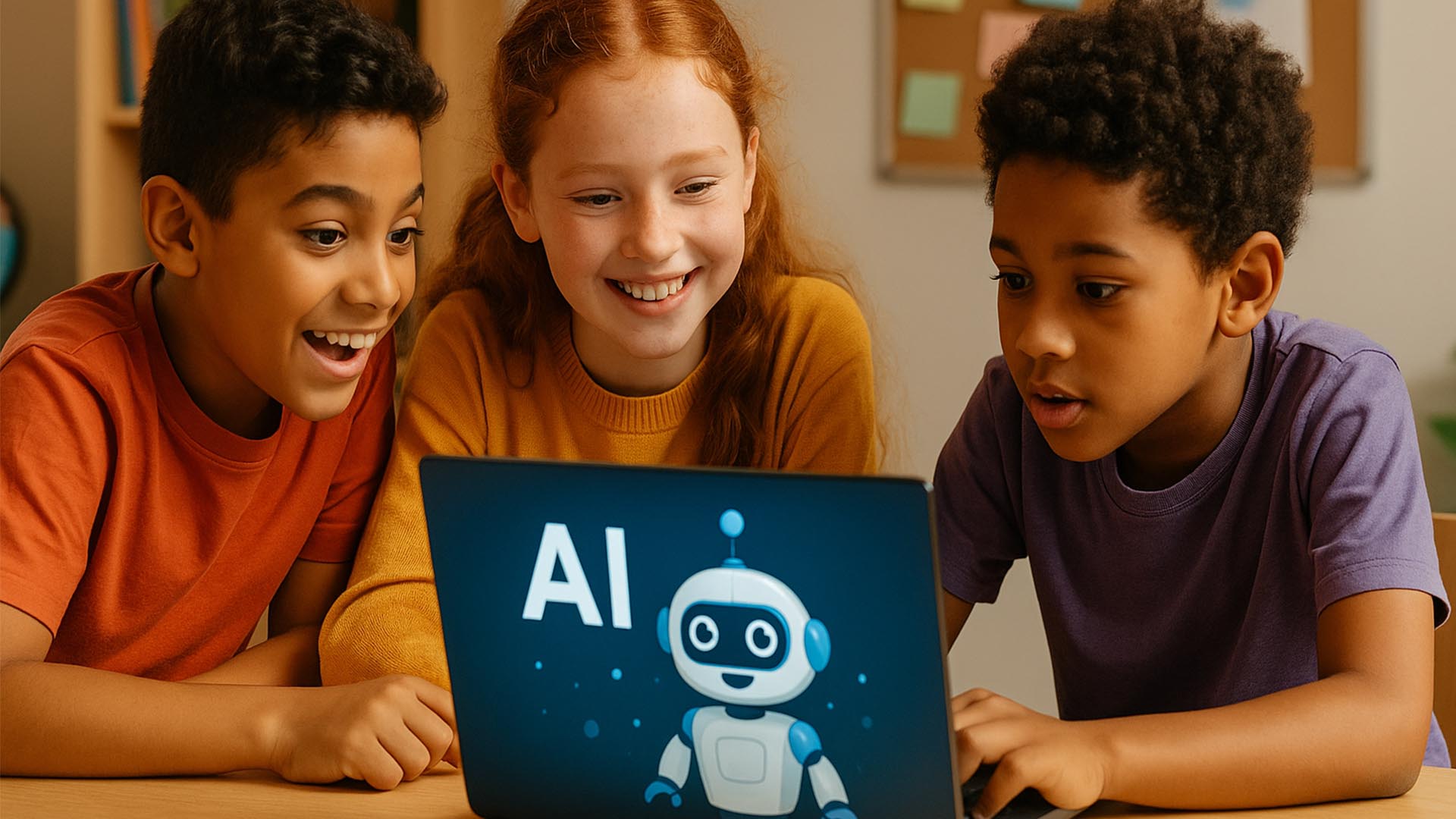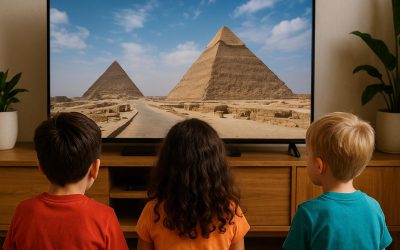Imagine a learning buddy that knows exactly what you need help with, makes lessons super fun, and is always ready to explore new ideas with you! That’s a bit like what Artificial Intelligence (AI) tools can be for kids. AI is becoming a big part of our world, and it’s also making its way into how children learn and play.
From interactive apps that teach new languages to creative tools that help build amazing projects, AI offers exciting new ways for kids to discover and grow [1]. This article will explore how these smart tools can benefit children’s education, how to use them safely, and why understanding AI is a skill for the future.
What is AI and How Can it Help Kids Learn?
At its simplest, Artificial Intelligence (AI) is about making computers think and learn like humans. For kids, this means educational apps and programs can become smarter and more responsive. AI can personalize learning experiences, adapting to each child’s pace and style, making education more engaging and effective [2].
Personalized Learning Journeys
AI-powered educational tools can identify areas where a child needs extra practice and provide tailored activities. For example, a math app might offer more problems on fractions if it notices a child is struggling, or a language app like Duolingo can adapt lessons based on individual progress [3]. This personalized approach helps children master concepts at their own speed, building confidence along the way.
Boosting Creativity and Problem-Solving
Many AI tools are designed to spark creativity. Platforms like Scratch, with its Machine Learning Extension, allow kids to build their own interactive stories, games, and animations, teaching them coding and computational thinking. Google’s Teachable Machine lets children train AI models with their own data, offering a hands-on introduction to how AI works [4]. These tools encourage kids to experiment, solve problems, and think innovatively.
Making Learning Fun and Engaging
AI can transform traditional learning into exciting adventures. Interactive AI tutors can guide children through subjects, making complex topics easier to understand. Gamified learning experiences, often powered by AI, keep children motivated and eager to learn more. Imagine learning history by interacting with an AI character from the past, or exploring science through virtual experiments guided by an intelligent assistant!
Staying Safe and Smart with AI
While AI offers many benefits, it’s important for parents and children to use these tools wisely and safely. Just like any technology, there are things to keep in mind to ensure a positive experience.
Parental Guidance is Key
Parents play a crucial role in supervising their children’s interaction with AI tools. Choosing platforms designed specifically for kids, like LittleLit AI, which offers safe AI tutors and K-12 aligned curriculum, is a great start [5]. Discussing online safety and privacy with children is also essential, teaching them not to share personal information and to be critical of information they encounter online.
Understanding the Limitations
It’s important for children to understand that AI tools are aids, not replacements for human interaction or critical thinking. While AI can summarize information or generate ideas, it’s the child’s own brainpower and creativity that truly drive learning and innovation. AI can sometimes spread bias or present inaccurate information, so teaching children to question and verify is vital [6].
The Future is AI: Preparing Kids for Tomorrow
Learning about AI isn’t just about using tools; it’s about preparing children for a future where AI will be even more prevalent. Understanding how AI works, its capabilities, and its ethical implications will be a valuable skill in almost any career path. AI education enhances critical thinking, fosters a scientific mindset, and helps children develop the digital literacy skills needed for their future [7].
Q&A: Your Questions About AI and Kids’ Learning Answered
Q1: Is AI safe for my child to use for learning?
A1: Yes, many AI tools are designed with children’s safety in mind. Look for platforms specifically created for kids and always supervise their online activities. Discuss privacy and responsible online behavior with your child.
Q2: How can AI personalize my child’s learning?
A2: AI tools can adapt to your child’s learning pace and style, offering customized exercises and content based on their strengths and weaknesses. This helps them learn more effectively and stay engaged.
Q3: What are some examples of AI tools for kids?
A3: Examples include language learning apps like Duolingo, coding platforms like Scratch with AI extensions, and creative tools like Google’s Teachable Machine. There are also AI tutors and educational games.
Q4: Will AI replace teachers?
A4: No, AI is a tool to assist and enhance learning, not replace teachers. Teachers provide human connection, emotional support, and critical thinking guidance that AI cannot replicate. AI can help teachers personalize lessons and automate administrative tasks, giving them more time to focus on students.
Conclusion
AI tools offer an exciting new frontier in children’s education, providing personalized, engaging, and creative ways to learn. By embracing these smart tools responsibly and with proper guidance, we can empower our children to develop essential skills for the future and embark on incredible learning adventures. The key is to approach AI with curiosity, critical thinking, and a focus on safety.
Sources
- 10 Best AI Tools for Kids in 2025 (Fun, Safe & Educational)
- Top Benefits Of AI In Education For Teachers and Students
- Any good AI tools that help with homeschooling?
- 10 Best AI Tools for Kids in 2025 (Fun, Safe & Educational)
- LittleLit AI for Kids | Safe AI Education Platform for Students
- How Will Artificial Intelligence (AI) Affect Children?
- 10 Reasons Why Artificial Intelligence Education is …








0 Comments